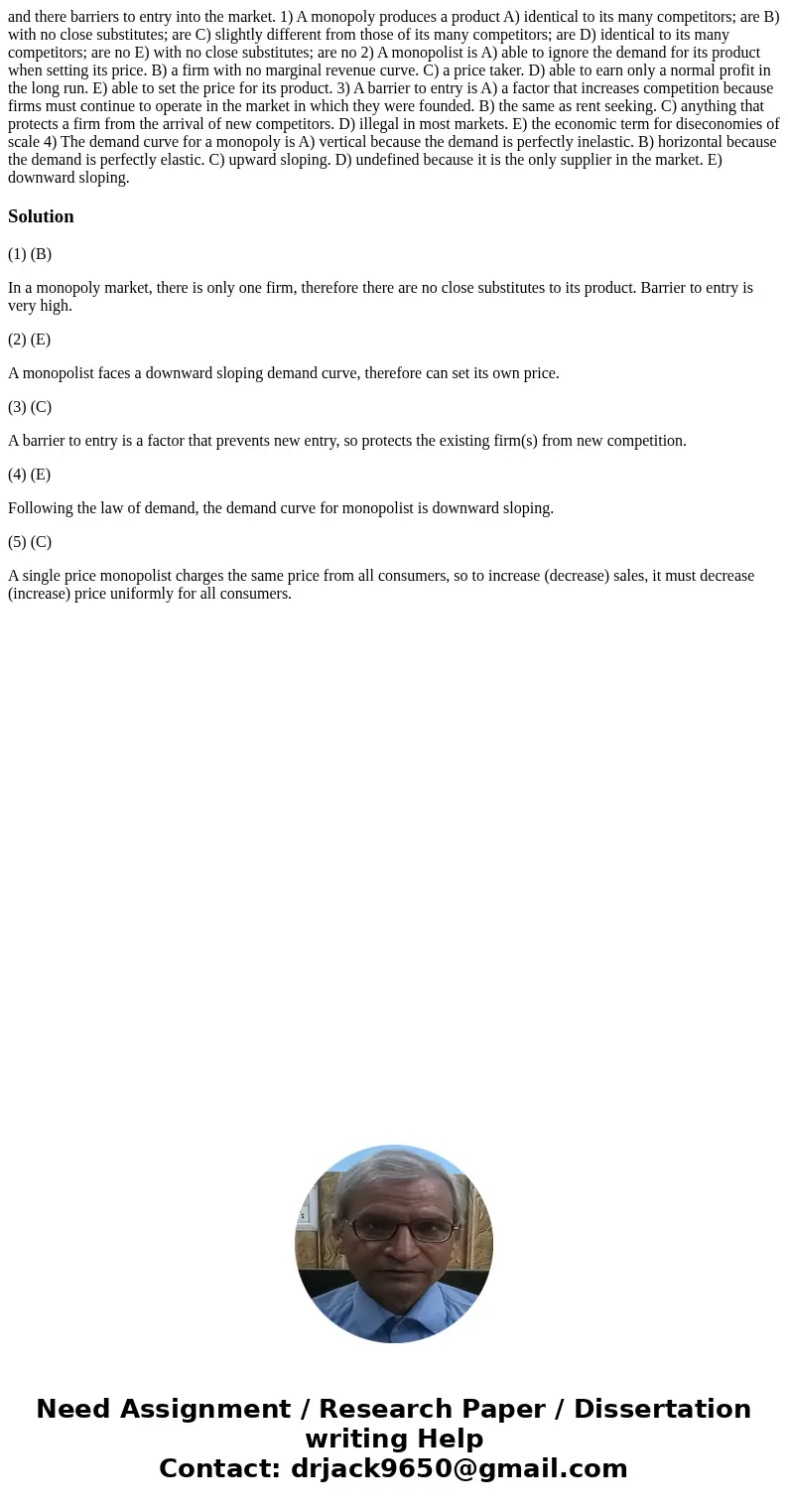and there barriers to entry into the market 1 A monopoly pro
and there barriers to entry into the market. 1) A monopoly produces a product A) identical to its many competitors; are B) with no close substitutes; are C) slightly different from those of its many competitors; are D) identical to its many competitors; are no E) with no close substitutes; are no 2) A monopolist is A) able to ignore the demand for its product when setting its price. B) a firm with no marginal revenue curve. C) a price taker. D) able to earn only a normal profit in the long run. E) able to set the price for its product. 3) A barrier to entry is A) a factor that increases competition because firms must continue to operate in the market in which they were founded. B) the same as rent seeking. C) anything that protects a firm from the arrival of new competitors. D) illegal in most markets. E) the economic term for diseconomies of scale 4) The demand curve for a monopoly is A) vertical because the demand is perfectly inelastic. B) horizontal because the demand is perfectly elastic. C) upward sloping. D) undefined because it is the only supplier in the market. E) downward sloping. 
Solution
(1) (B)
In a monopoly market, there is only one firm, therefore there are no close substitutes to its product. Barrier to entry is very high.
(2) (E)
A monopolist faces a downward sloping demand curve, therefore can set its own price.
(3) (C)
A barrier to entry is a factor that prevents new entry, so protects the existing firm(s) from new competition.
(4) (E)
Following the law of demand, the demand curve for monopolist is downward sloping.
(5) (C)
A single price monopolist charges the same price from all consumers, so to increase (decrease) sales, it must decrease (increase) price uniformly for all consumers.

 Homework Sourse
Homework Sourse